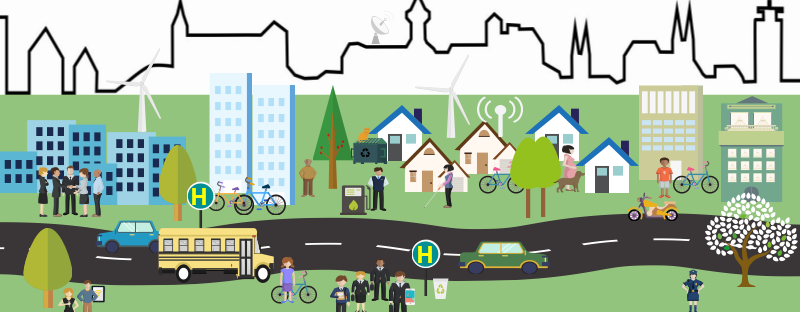[ Kurzfassung ]
Zukunftsfähige Städte betreffen alle Akteure einer Stadt, von den Bewohnern bis hin zu der Verwaltung. Die Städte müssen sich auf immer neue, veränderte Herausforderungen einstellen und diesen zielgerichtet begegnen, damit die Stadt als Gemeinwesen lebenswert erhalten bleiben kann. Hieraus versuchen privatwirtschaftliche Unternehmen Profit zu schlagen. Aktuell bringt die, sich verstärkende, Digitalisierung viele neue Impulse für die Städte. Ein wichtiger Ansatz dabei ist vor allem die Smart City, welche eine Verknüpfung zwischen Stadtplanung sowie den Informations- und Kommunikationstechnologien erreichen soll. Dieses Konzept wird innereuropäisch verglichen, um darzustellen, was mögliche Projekte hin auf den Weg zu einer zukunftsgerechten Stadt sind. Viele Städte bezeichnen sich schon als Smart City, allerdings die Stadt Nürnberg nicht. Wieso dies der Fall ist, wird im Zuge der Arbeit aufgezeigt. Ein Verknüpfungspunkt aller zukunftsleitenden Ideen und Ansätze ist die Partizipation der Bewohner, um deren Bedürfnisse besser in die Stadt aufnehmen zu können. Somit entscheiden diese über das Gelingen oder auch das Scheitern vieler neuer Konzepte. Die Arbeit soll einen Beitrag dazu leisten, wie zukunftsfähige Städte definiert und welche Kriterien dazu identifiziert werden können.
![]()
[ Abstract ]
Sustainable cities affect all players of a city, from the residents to the local government. However, cities must always adapt to new and changing challenges and target this responsibility purposefully, so that they remain livable as a community. Hence the private sector tries to make profits from this. Currently the increasing digitization provides many new stimulus for the cities. An important approach here is especially the Smart City, which establishes a link between urban planning as well as the information and communication technologies. This concept will be compared within Europe to illustrate what possible projects on the path to a future-oriented city might be. Many cities designate themselves as Smart Cities, but this is not the case for the city of Nuremberg. The reason for this matter will be examined during the course of this paper. A connecting point of all trendsetting ideas and approaches is the participation of residents in order to better accommodate their needs in the city. Thus, the citizens decide, wether new concepts succeed or fail. This work is supposed to contribute tot he discourse on how sustainable cities can be defined and which criteria can be identified in this context.
